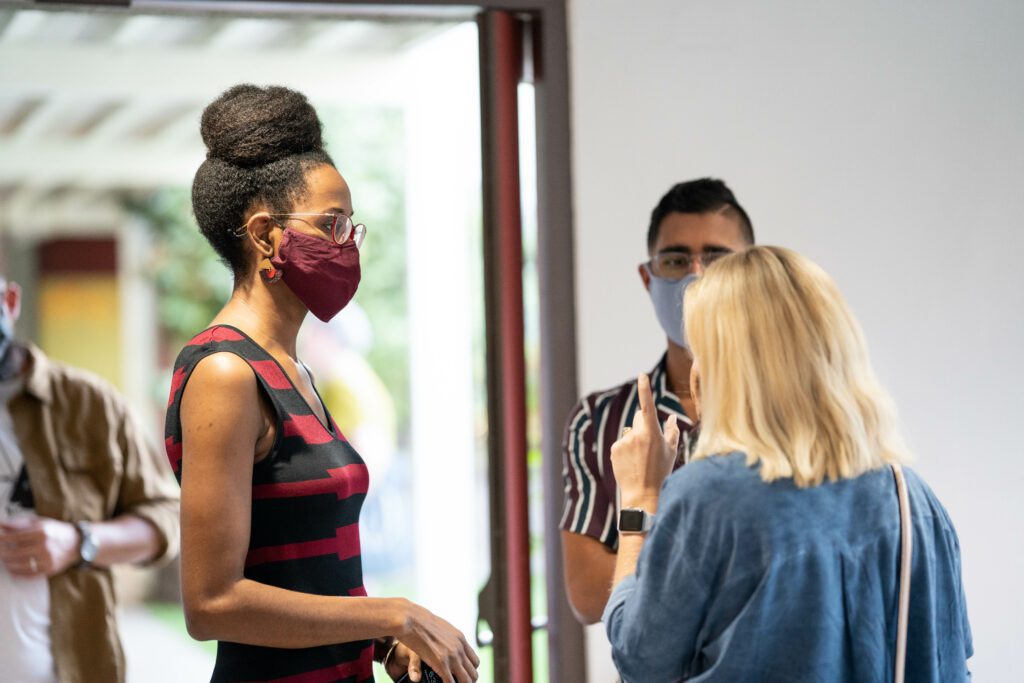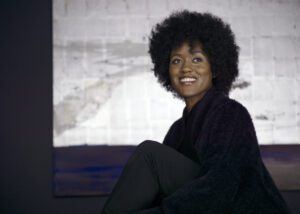Dea Jenkins is an artist in Southern California who wants to help others incorporate the arts into worship. She uses a wide variety of media: performance art, film, visual arts and music. She is also very interested in the intersection between art and social healing. Dea sees art as a way to connect with others and to create common ground for people to connect and speak with each other. She views art as a way to engage God and others through our bodies.
A path to ministry
While growing up Dea always made a distinction between her relationship with God and her relationship with the church. Her relationship with God, while still having its ups and downs, was a constant in her life. However, her relationship with the church has been much more varied. As a person who learns and expresses primarily through tactile materials, she was often bored while sitting in church. She wanted to be engaged but didn’t want to stick around for a 2 hour service. This played out in her life through the desire to bring the arts into worship experiences.
Dea Jenkins’s path into her current ministry took her to Fuller Seminary where she earned degrees in theology and intercultural studies with an emphasis on the arts. Her path to Fuller began with her desire to know more about how to exegete scripture. She didn’t know at the time that God would use her curiosity to welcome her into a more expansive understanding of worship.
The arts and ministry
When asked about why the church has gotten away from the arts Dea shared that the Enlightenment brought a new emphasis on the written word and critical thinking. Pre-Enlightenment art in the church was a vital tool. For largely illiterate populations, art was central in teaching, storytelling, and sharing the gospel. Art was a way to share stories and instruct. But in the subsequent centuries the church lost its connection to the arts when it leaned into more intellectual pursuits. Dea shares, “Art is a primary way that people communicate with God. If you aren’t incorporating the arts, how are you engaging the people? If you lose the way people are accustomed to speaking, how are you going to connect with them?”
Dea finds that art is still a powerful tool for communicating difficult subjects. Hard topics like racism are more easily facilitated through the lenses of art and story. People can begin to see stories through someone else’s lens. It can help people process what they are thinking and feeling in themselves. “Art can help set the tone for a room and can help us imagine something different,” Dea states. It promotes healing and connection to God.

In her work Dea encounters many friends and others who are outside the church, and she finds that art helps create a safe space for everyone. She has lots of conversations around faith and God with artist friends who are very spiritual and expansive people. She appreciates that she can see how God works differently in people’s lives in very creative ways and that informs her own Christianity. Likewise people feel comfortable having spiritual conversations with her because as an artist she can express her own faith without the “stickiness” of trying to invite people into a church building for a service. They appreciate how consistent she is in speaking about faith and can see how not everyone who attends church is the same. It is helpful for them to see what else is possible if you’re a Christian.
In Dea’s spiritual journey as an artist she has seen God working and moving, and she has learned that just because something doesn’t have a Christian stamp or label on it does not mean that God is not in it. It expands her understanding of what is possible in a worship space. “We need to get out of a narrow understanding of how we worship and engage with God. God shows up in many different ways even if Christians have not sanctioned it,” Dea shares.
Prayer
Creating God, thank you for the arts and artists. Thank you for planting your creative Spirit in us so we might also create. You have taught us and shown us your love through Creation and creating. Continue to give artists your creativity so we may continue to experience you and learn about you. Help us learn more about each other and ourselves through art, so that we may learn to love one another more. Amen.
Learn more
For those who want to learn more about or follow Dea, her social media and websites are found here:
Personal/Artwork: @dea.artist and www.deajenkins.com
Inbreak (worship and creative community): @inbreak.co and inbreak.co
Dea Studios LLC: @dea.studios and www.deastudios.com


